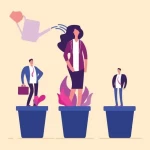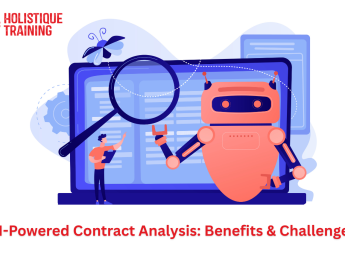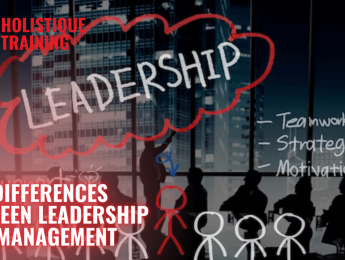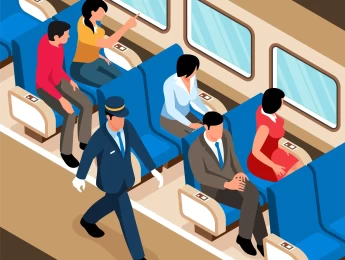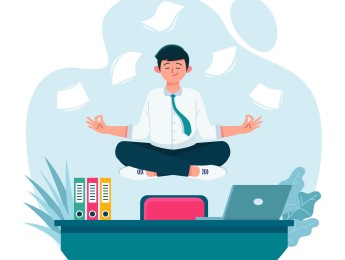- Table of Contents
- Introduction
- What Is Leadership Development in Organisations?
- The Different Forms of Leadership Development
- 1- Training Programs
- 2- Mentorship and Coaching
- 3- Experiential Learning
- 4- 360-Degree Feedback
- The Problems with Traditional Executive Education
- Lack of Practical Application
- Limited Flexibility
- Insufficient Soft Skills Development
- Changing Nature of Leadership
- Why Should You Invest In Leadership Development Now More Than Ever?
- a) Navigating Uncertainty
- b) Driving Innovation
- c) Talent Retention and Engagement
- d) Globalisation and Diversity
- e) Ethical and Social Responsibility
- f) Succession Planning
- The Role of Technology in Leadership Development
- 1. E-Learning Platforms and Virtual Learning Environments
- 2. Data Analytics for Personalised Learning Paths
- 3. Virtual Reality (VR) and Augmented Reality (AR) Experiences
- 4. Online Collaboration and Networking Platforms
- 5. Artificial Intelligence (AI) for Adaptive Learning
- 6. Gamification for Engagement
- Get Started and Invest Now in Your Leaders' Success
- Conclusion
Introduction
Amidst the rapid transformations shaping the corporate landscape, leadership has transcended its conventional role. No longer confined to hierarchical structures, it now embodies innovation, inspiration, and adaptability. As the dynamics of leadership continue to evolve, the significance of cultivating effective leaders has reached an unprecedented zenith. In this blog post, we delve into the realm of leadership development, uncovering its multifaceted nature, exploring its various forms, critiquing traditional executive education, and elaborating on why investing in leadership development has never been more vital than in these transformative times.
What Is Leadership Development in Organisations?
Leadership development is the intentional process of enhancing leadership skills, competencies, and qualities in individuals within an organisation. It goes beyond the traditional view of leadership as a title and recognises that effective leaders can emerge at all levels of an organisation. It involves nurturing qualities like strategic thinking, emotional intelligence, communication, adaptability, and empathy.
In the past, leadership was often associated with a hierarchical structure. However, the modern business environment requires leaders who can collaborate across departments, inspire diverse teams, and drive innovation. Leadership development aims to create such leaders who can not only navigate complexities but also empower their teams to thrive.
The Different Forms of Leadership Development
1- Training Programs
Formaltraining programs represent a cornerstone in leadership development. These initiatives are meticulously designed to impart specific skills and knowledge deemed crucial for effective leadership. Ranging from conflict resolution to decision-making and time management, these programs provide a structured learning experience. However, their impact can be limited if not seamlessly integrated into real-world contexts.
These training sessions often involve expert facilitators, real-life case studies, and interactive workshops. The goal is to expose leaders to scenarios that mirror the complexities they might encounter in their roles. The effectiveness of these programmes is enhanced when they incorporate a blend of theoretical knowledge and practical application, bridging the gap between learning and implementation.
2- Mentorship and Coaching
Mentorship and coaching add a personalised dimension to leadership development. A mentor, usually an experienced leader within the organisation, becomes a guide, offering insights based on their own professional journey. The mentor-mentee relationship fosters a transfer of tacit knowledge, helping aspiring leaders navigate challenges and make informed decisions.
On the other hand, coaching focuses on individual development, helping leaders identify their strengths and areas for improvement. Coaches work closely with leaders to set goals, create action plans, and provide ongoing support. This form of development is instrumental in cultivating self-awareness and promoting continuous personal and professional growth.
3- Experiential Learning
Learning by doing is a powerful paradigm in leadership development. Experiential learning involves immersing leaders in challenging projects, cross-functional collaborations, or new responsibilities. By actively participating in these hands-on experiences, leaders apply their knowledge and skills in real-world scenarios.
The impact of experiential learning extends beyond the immediate task at hand. Leaders develop adaptability as they navigate unforeseen challenges, hone their problem-solving skills, and foster innovation. This approach acknowledges that true leadership is not solely acquired through theoretical knowledge but through the practical application of skills in diverse and dynamic situations.
4- 360-Degree Feedback
While traditional feedback typically flows from supervisors to subordinates, the 360-degree feedback approach expands the feedback loop. This method collects input from various sources, including peers, subordinates, and supervisors, providing leaders with a comprehensive view of their strengths and areas requiring development.
The process encourages self-awareness by offering insights into blind spots that leaders may not be aware of. It also motivates leaders to take proactive measures for improvement based on a well-rounded understanding of their performance. This holistic feedback mechanism contributes to a more accurate and nuanced assessment of leadership capabilities.
Table 1: Effectiveness of Different Leadership Development Approaches
Development Approach | Strengths | Challenges |
Training Programmes | Structured learning experience, exposure to real-world scenarios | Limited impact without integration into practical contexts |
Mentorship and Coaching | Personalised guidance, transfer of tacit knowledge | Dependency on the availability of experienced mentors |
Experiential Learning | Hands-on experience, development of adaptability | Resource-intensive, challenges in creating controlled environments |
360-Degree Feedback | Comprehensive view, promotes self-awareness | Potential for biassed feedback, requires a culture of openness |
The Problems with Traditional Executive Education
Traditional executive education, often characterised by classroom-based lectures and theoretical learning, can fall short in preparing leaders for the dynamic challenges of today's business world. Here's why:
Lack of Practical Application
Traditional executive education, often synonymous with classroom-based lectures and theoretical learning, faces a significant challenge in bridging the gap between theory and practical application. Many programs tend to emphasise theoretical concepts without providing ample opportunities for participants to apply their learning in real-world situations.
Theoretical knowledge, while valuable, can only take leaders so far. Without practical application, leaders may struggle to translate their acquired skills into effective decision-making and problem-solving in the complex, dynamic environments they face daily. A more hands-on approach, such as incorporating case studies or simulations, is crucial to ensure that leaders can immediately apply what they learn to their professional roles.
Limited Flexibility
The traditional classroom model may not align with the demands of modern leaders who operate in fast-paced, ever-changing business landscapes. Executives often juggle busy schedules, and the need for continuous engagement clashes with rigid education structures.
Online and flexible learning options have gained prominence in recent years, allowing leaders to access educational content at their own pace. Traditional executive education must adapt to accommodate these flexible formats to cater to the diverse learning needs of today's leaders. This evolution ensures that education is an enabler rather than a constraint on a leader's professional commitments.
Insufficient Soft Skills Development
Effective leadership extends beyond technical expertise. Soft skills, such as communication, emotional intelligence, and adaptability, are critical components of successful leadership. However, traditional executive education settings may often sideline the development of these essential interpersonal skills.
Leaders need more than a theoretical understanding of business concepts; they must be adept at navigating complex social dynamics, understanding the emotional pulse of their teams, and communicating persuasively. Integrating experiential activities, role-playing scenarios, and interactive workshops into executive education can address this gap and ensure a more comprehensive development of both technical and soft skills.
Changing Nature of Leadership
The traditional model of executive education doesn't always align with the evolving concept of leadership. Modern leadership emphasises collaboration, empathy, and inclusivity. Leaders today must navigate diverse teams and global challenges, requiring more contemporary approaches to education.
In a rapidly changing business environment, the ability to lead with agility and embrace innovation is paramount. Traditional executive education models may fall short in fostering these qualities, emphasising routine procedures over adaptive leadership. Updating curricula to incorporate emerging leadership paradigms ensures that leaders are equipped with the skills necessary to thrive in the current business landscape.
Addressing these challenges requires a paradigm shift in how executive education is structured and delivered. An adaptive and forward-thinking approach will better prepare leaders for the multifaceted demands of contemporary business environments.
Why Should You Invest In Leadership Development Now More Than Ever?
In the current business landscape, characterised by rapid technological advancements, economic uncertainties, and unexpected global events, the investment in leadership development has become more than a strategic choice—it's a necessity. Here are compelling reasons why organisations should prioritise and accelerate their investment in leadership development now more than ever:
a) Navigating Uncertainty
The business world is facing unprecedented levels of uncertainty. Technological disruptions, geopolitical shifts, and unforeseen global events create an environment where change is the only constant. Leaders who possess the ability to adapt to these changes and guide their teams through uncertainty are invaluable assets to any organisation.
Investing in leadership development equips leaders with the skills to navigate ambiguity, make informed decisions in volatile situations, and instil confidence in their teams during turbulent times. The resilience fostered through effective leadership development ensures that organisations not only survive but thrive in the face of uncertainty.
b) Driving Innovation
Innovation is a cornerstone of staying competitive in today's fast-paced business environment. Leaders who can foster a culture of innovation and encourage creativity within their teams play a pivotal role in driving organisational success. The ability to think strategically, embrace change, and inspire innovative thinking is cultivated through targeted leadership development initiatives.
Leadership development programs that emphasise creative problem-solving, design thinking, and collaboration empower leaders to champion innovation within their teams. This, in turn, positions organisations to identify and seize new opportunities, staying ahead of the curve in dynamic markets.
c) Talent Retention and Engagement
In an era where job satisfaction and work-life balance are paramount, effective leadership is a key factor in retaining top talent. Leaders who can create environments where employees feel valued, motivated, and supported contribute to increased engagement and reduced turnover.
Investing in leadership development ensures that leaders are equipped with the skills to build positive workplace cultures, communicate effectively, and address the evolving needs of their teams. Engaged employees are more likely to stay with an organisation, leading to enhanced stability and continuity in a rapidly changing business landscape.
d) Globalisation and Diversity
The global nature of businesses today requires leaders who can bridge cultural gaps and lead diverse teams effectively. Leadership development that includes cross-cultural competence becomes imperative in fostering harmonious and productive work environments.
Leaders equipped with the ability to navigate diverse cultures, understand global market dynamics, and communicate across language and cultural barriers contribute to the overall success of international business endeavours. Investing in leadership development ensures that leaders are well-prepared to lead in a globalised world.
e) Ethical and Social Responsibility
Stakeholders, including employees, customers, and investors, increasingly demand ethical leadership that takes social responsibility seriously. Leaders who are well-versed in ethical decision-making, sustainability, and corporate social responsibility contribute to a positive corporate reputation.
Leadership development programs that incorporate modules on ethical leadership and social responsibility not only align with societal expectations but also create a culture of integrity within the organisation. This, in turn, enhances brand trust and strengthens the long-term sustainability of the business.
f) Succession Planning
As the baby boomer generation retires, organisations must ensure a smooth transition of leadership. Investing in leadership development establishes a pipeline of capable leaders ready to step into higher roles, ensuring the continuity of organisational leadership.
Succession planning becomes a strategic imperative, and leadership development programs play a pivotal role in identifying and nurturing the next generation of leaders. Organisations that invest in developing their leadership talent not only mitigate the risks associated with leadership gaps but also position themselves for sustained success in the long run.
Investing in leadership development now is not just an expenditure; it's a strategic move that positions organisations for resilience and success in an unpredictable future. As the saying goes, "The best time to plant a tree was 20 years ago; the second-best time is now." Similarly, the best time to invest in leadership development was before the challenges arose; the second-best time is now. The returns on this investment extend far beyond immediate gains—they shape the future trajectory of organisations in an ever-evolving business landscape.
The Role of Technology in Leadership Development
In the era of digital transformation, technology has emerged as a powerful enabler in the realm of leadership development. The integration of technological tools and platforms has revolutionised the way leadership skills are cultivated, assessed, and enhanced. Here are key aspects highlighting the indispensable role of technology in shaping modern leadership development:
1. E-Learning Platforms and Virtual Learning Environments
E-learning platforms have become instrumental in providing accessible and flexible leadership development opportunities. Leaders can engage in courses, webinars, and training modules remotely, allowing them to tailor their learning experiences to fit busy schedules. Virtual learning environments foster continuous learning, enabling leaders to acquire new skills at their own pace and convenience.
These platforms often utilise multimedia elements, interactive simulations, and engaging content to create immersive learning experiences. The result is a more dynamic and engaging approach to leadership development that goes beyond traditional classroom settings.
2. Data Analytics for Personalised Learning Paths
Technology facilitates the collection and analysis of vast amounts of data, paving the way for personalised leadership development paths. Through data analytics, organisations can gain insights into the specific needs and preferences of individual leaders. This data-driven approach allows for the customisation of learning programs, ensuring that leaders receive training aligned with their unique strengths and areas for improvement.
By leveraging data analytics, organisations can also track the progress of leaders over time, identifying trends and adapting development strategies accordingly. This iterative feedback loop enhances the effectiveness of leadership development initiatives.
3. Virtual Reality (VR) and Augmented Reality (AR) Experiences
Immersive technologies such as virtual reality (VR) and augmented reality (AR) are transforming leadership development by creating lifelike scenarios for leaders to navigate. VR simulations, for example, can immerse leaders in realistic, high-pressure situations where they must make decisions and solve problems on the spot.
These experiences provide a safe and controlled environment for leaders to practise and enhance their decision-making, crisis management, and communication skills. The ability to learn through simulated experiences adds a practical dimension to leadership development that goes beyond traditional theoretical approaches.
4. Online Collaboration and Networking Platforms
Leadership is increasingly about collaboration and building networks. Technology facilitates online collaboration platforms that enable leaders to connect, share insights, and learn from each other. Virtual communities and forums create spaces for leaders to discuss challenges, exchange best practices, and build a collective knowledge base.
These platforms break down geographical barriers, allowing leaders from different locations and backgrounds to engage in meaningful interactions. The exchange of diverse perspectives contributes to a richer learning experience, aligning with the collaborative nature of modern leadership.
5. Artificial Intelligence (AI) for Adaptive Learning
Artificial Intelligence (AI) is reshaping leadership development through adaptive learning systems. These systems use AI algorithms to assess individual learning styles, strengths, and weaknesses. Based on this assessment, the learning content is dynamically adjusted to meet the specific needs of each leader.
Adaptive learning ensures that leaders receive content at the right level of complexity, reinforcing concepts they find challenging while accelerating through familiar topics. This personalised approach maximises the efficiency and impact of leadership development programs.
6. Gamification for Engagement
Gamification elements, such as leaderboards, badges, and interactive challenges, are increasingly integrated into leadership development programs. These elements enhance engagement by adding a competitive and fun aspect to the learning process. In fact,statistics show that challenge-based gamification demonstrated an 89.45% improvement in student performance over traditional lecture-based education. Leaders earn rewards for completing tasks, achieving milestones, or demonstrating mastery of specific skills.
By incorporating gamification, technology transforms leadership development from a passive experience into an interactive journey. This approach resonates particularly well with younger generations entering leadership roles, who are accustomed to interactive and gamified learning environments.
In short, the integration of technology in leadership development is not just a trend but a strategic imperative. The dynamic, adaptive, and engaging nature of technological tools enhances the effectiveness of leadership programs, ensuring that leaders are well-equipped to navigate the complexities of the modern business landscape. Embracing technology in leadership development is not just about keeping up with the times; it's about staying ahead and fostering a culture of continuous learning and innovation.
Get Started and Invest Now in Your Leaders' Success
As the landscape of leadership evolves, seizing the opportunity to invest in your leaders' development is a strategic move that can yield substantial long-term benefits for your organisation. While the idea of investing in leadership training programmes might seem like a significant upfront expense, the returns in terms of enhanced performance, employee engagement, and organisational growth are well worth it. In fact,statistical data on leadership training reveals a noteworthy 28% enhancement in essential leadership skills among employees who have undergone training to elevate their leadership abilities.
Think of it as sowing the seeds of leadership excellence that will yield a bountiful harvest of innovation, collaboration, and resilience in the years to come. These training programmes are more than just courses; they are transformative experiences that empower your leaders with the tools, insights, and skills they need to navigate complex challenges with confidence.
Yes, the initial cost might give you pause, but consider the broader picture. Effective leadership can drive innovation, increase operational efficiency, and contribute to a positive organisational culture that attracts and retains top talent. As your leaders grow and develop, so does your organisation's capacity for success.
Ready to take the next step?Contact us now to learn more about our comprehensive leadership training programmes that are designed to equip your leaders with the skills they need to thrive in today's dynamic business environment. Don't wait—invest in your leaders' future and secure your organisation's success today!
Conclusion
Leadership development is not just an option; it's a strategic necessity for organisations aiming to thrive in today's volatile business landscape. The shift towards collaborative, empathetic, and innovative leadership requires a new approach—one that embraces experiential learning, personalised coaching, and continuous development. By investing in leadership development now, organisations can forge a path towards sustainable growth, resilience, and success in the face of unprecedented challenges. Remember, leadership isn't just about managing; it's about inspiring, influencing, and shaping the future.
Ready to embark on this transformative journey? Take the first step towards leadership excellence with our course ‘Perfecting Your Management and Leadership Skills.’ Your leaders deserve the best, and this course is designed to empower them with the tools they need to lead with confidence and drive organisational success.



